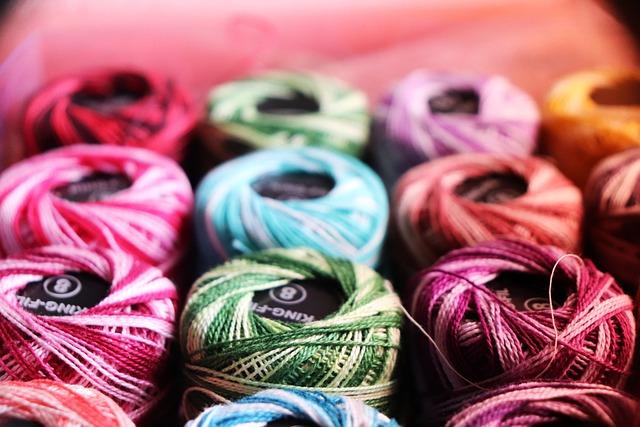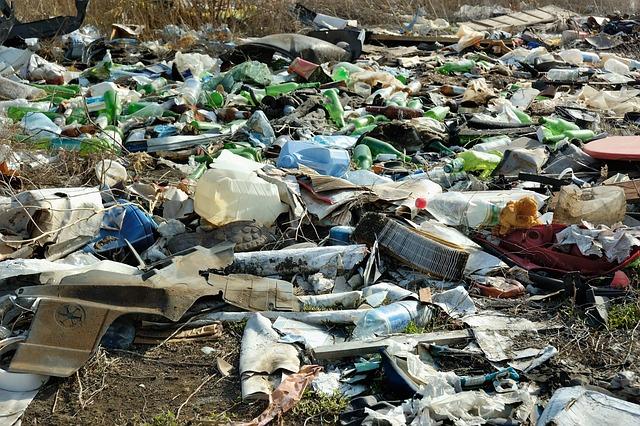Speedy Style, Gradual Poison: New Record Exposes Poisonous Have an effect on of World Textile Waste in Ghana
As the world urge for food for speedy type continues to surge, the environmental penalties of this relentless intake are changing into an increasing number of alarming. A up to date document through Greenpeace shines a highlight at the devastating results of textile waste, particularly in Ghana, the place discarded clothes from prosperous countries has became a poisonous disaster. This exposé finds how overflowing landfills, unsustainable recycling practices, and dangerous chemical substances have resulted in grave public health and ecological ramifications for communities that endure the brunt of this textile deluge. Because the type trade grapples with its sustainability disaster,this document serves as a the most important reminder of the hidden prices in the back of the attract of reasonably priced clothes. On this article,we delve into the findings of the document,read about the processes contributing to Ghana’s textile waste disaster,and discover the broader implications of rapid type on world ecosystems.
Figuring out the Urgency of Textile Waste in Ghana
The alarming upward thrust of textile waste in Ghana highlights a crucial environmental factor stemming from the quick type trade. Every yr, over 100 million clothes are imported into the contry, a lot of which grow to be discarded and finally end up in huge landfills or are incinerated. This inflow has vital repercussions,because it now not onyl overwhelms native waste control methods however additionally contributes to soil and water contamination.the poisonous legacy of artificial fibers, dyes, and chemical substances from rapid type manufacturers leaches into ecosystems, posing critical threats to each human well being and biodiversity. As communities struggle the implications of this disaster, consciousness and motion grow to be crucial.
To snatch the magnitude of this problem, imagine some demanding statistics relating to Ghana’s textile waste:
| Statistic | Have an effect on |
|---|---|
| Over 1 million lots | Textile waste generated yearly |
| Not up to 5% | Recycling charge of textile waste |
| Top ranges of non-biodegradable waste | Soil and water contamination dangers |
Additionally, the socio-economic ramifications are similarly relating to. Many locals rely at the casual recycling sector for his or her livelihoods, however the poisonous ingredients contained in discarded textiles pose well being dangers to staff and close by communities. As local weather alternate continues to exacerbate environmental demanding situations, the will for lasting practices and accountable intake has by no means been extra pressing. A cohesive reaction to this disaster—from policymakers to customers—will be crucial in mitigating the poisonous affect of world textile waste in Ghana.

The Environmental Toll of rapid Style on Native Communities
The fast upward thrust of rapid type has created a devastating cycle of waste that considerably affects native communities, in particular in growing international locations like Ghana. As probably the most greatest recipients of second-hand garments, the country unearths itself drowning in a sea of textile waste, with an estimated 40% of those garments deemed unsalable. This inflow now not most effective burdens native landfills but additionally exacerbates environmental degradation, main to devastating penalties for each the ecosystem and citizens. Key issues come with:
- Soil Contamination: The irrelevant disposal of unsold pieces results in poisonous chemical substances leaching into the soil.
- Air Air pollution: the herbal decomposition of textiles emits damaging gases,contributing to deficient air high quality.
- Well being Problems: Native communities enjoy emerging well being issues related to publicity to hazardous fabrics utilized in clothes manufacturing.
Moreover, the shift in native economies against the rapid type style has disrupted conventional livelihoods, with small-scale artisans suffering to compete with reasonable, industrially produced clothes. A relating to have an effect on of this transition is the decline in indigenous textile crafts, which don’t seem to be most effective culturally vital but additionally sustainable. With the trade regularly sufficient prioritizing benefit over other people, the affect on native staff is serious, as noticed in the information beneath:
| Have an effect on on Native Financial system | Statistic |
|---|---|
| Lower in Native Textile Manufacturing | 60% |
| Building up in Imported 2nd-Hand Clothes | 150% |
| upward thrust in Unemployment Amongst Artisans | 40% |

Well being Dangers Connected to Poisonous Dumping Practices
The alarming observe of poisonous dumping, in particular in areas like Ghana the place textile waste is prevalent, poses vital well being dangers to native communities. Folks dwelling close to those dumping websites are ofen uncovered to hazardous chemical substances used within the manufacturing of those clothes. Chemical substances reminiscent of azo dyes, heavy metals, and phthalates can leach into the soil and groundwater, main to a large number of well being problems. Kids and pregnant girls are particularly inclined, dealing with dangers that come with developmental delays, respiration issues, and reproductive headaches. The long-term results of those toxins can undermine public well being and pressure native healthcare methods that are already underresourced.
The implications of those hazardous fabrics don’t seem to be simply quick however too can lead to continual well being prerequisites. in step with fresh research, communities uncovered to textile waste have reported upper incidences of:
- most cancers: extended publicity to carcinogenic ingredients present in dyes and finishes utilized in clothes.
- pores and skin Irritations: Direct touch with infected fabrics resulting in rashes and allergies.
- Neurological Issues: Hyperlinks between chemical publicity and prerequisites like cognitive impairment and behavioral problems.
| Well being Factor | Related Chemical substances |
|---|---|
| Most cancers | Azo dyes, heavy metals |
| Pores and skin Irritations | Phthalates, formaldehyde |
| Neurological Issues | Heavy metals, solvents |

Leading edge Answers for Sustainable Textile Control
The alarming upward thrust of textile waste, in particular in growing international locations like Ghana, highlights an pressing want for leading edge answers geared toward sustainable textile control.This burgeoning disaster calls for methods that now not most effective deal with the over the top disposal of clothes but additionally take on the environmental and well being hazards posed through poisonous emissions and waste accumulation.A multi-faceted method coudl come with:
- Recycling Tasks: Growing environment friendly native recycling amenities that may procedure discarded textiles successfully.
- Upcycling Methods: Encouraging ingenious repurposing of clothes to increase their lifecycle.
- Schooling and Consciousness: Elevating public awareness concerning the environmental affect of rapid type and selling sustainable intake conduct.
- Partnerships with Manufacturers: Participating with type shops to ascertain sustainable take-back schemes.
Moreover, regulatory measures will have to be thought to be to carry textile producers in charge of their waste footprint. Incorporating the rules of a round financial system can foster a gadget the place sources are reused successfully, minimizing the environmental affect. Organising a intensive framework for textile disposal will now not most effective scale back air pollution but additionally generate doable financial alternatives thru activity advent in eco-friendly enterprises. A better exam finds that efficient waste control methods would possibly surround:
| Technique | Receive advantages |
|---|---|
| Textile Recycling | Reduces landfill waste and promotes useful resource restoration |
| Group Restore Workshops | Fosters abilities enlargement and decreases new purchases |
| Sustainable Style training | Encourages aware consumerism and eco-conscious alternatives |

Function of World Manufacturers in Mitigating Textile Waste Disaster
The expanding quantity of textile waste is a urgent environmental problem, and world manufacturers play a the most important function in addressing this disaster. Via adopting sustainable practices, those corporations can considerably scale back their contribution to waste. Key measures that manufacturers can put into effect come with:
- Adopting Round Style: Manufacturers can design merchandise with longevity in thoughts and decide to take-back techniques that inspire recycling and reuse.
- Readability in Provide Chains: A dedication to transparency lets in customers to make knowledgeable alternatives and grasp manufacturers in charge of their environmental affect.
- Funding in Sustainable Fabrics: Using natural, biodegradable, or recycled fabrics mitigates the damaging results of manufacturing and disposal.
Additionally, collaboration amongst manufacturers, governments, and NGOs can create synergistic efforts that magnify affect. as a notable instance, tasks that have interaction in neighborhood training about textile waste control can ignite shopper awareness about sustainable practices. A up to date document highlights that 100 million lots of textiles are produced yearly, and a vital proportion finally ends up as waste, in particular in areas like ghana. To higher perceive the results of this air pollution, right here is a transient comparability of the statistics:
| Metric | World Reasonable | Have an effect on in Ghana |
|---|---|---|
| textile Waste Generated | 92 million lots | Over 1 million lots processed yearly |
| Recycling Price | 13% | Not up to 1% |
| Environmental Air pollution | emerging | Crucial |

Advocating for Coverage Adjustments to Fight Speedy Style’s Have an effect on
The environmental toll of rapid type extends a ways past its quick results; it has created a posh internet of demanding situations that calls for decisive coverage intervention.Governments round the sector will have to acknowledge the urgency of preventing this factor and take tough steps towards extra sustainable practices. Those insurance policies must focal point on restricting the inflow of inexpensive textiles that give a contribution considerably to landfill overflow and air pollution. Via enforcing rules such as import price lists on second-hand clothes and necessary reporting on textile waste, governments can start to grasp rapid type manufacturers in charge of their environmental footprint. Additionally, funding in recycling and service infrastructures can stimulate local economies whilst decreasing the huge burden of waste generated through the trade.
Along with nationwide coverage adjustments, world cooperation is very important in addressing the transnational nature of rapid type. Global agreements geared toward decreasing textile waste and selling round economies can set the root for a sustainable long term. Stakeholders, together with manufacturers, customers, and NGOs, must suggest for the creation of eco-design rules, prompting corporations to imagine the lifecycle in their merchandise from inception to disposal. Via prioritizing insurance policies that require transparency in provide chains and incentivizing sustainable practices,we will be able to shift shopper conduct against extra accountable alternatives and in the long run mitigate the unfavorable results of textile waste. This united entrance can catalyze alternate in any respect ranges, making sure that the voices of the ones affected, reminiscent of communities in Ghana and past, are heard and heeded.

In Retrospect
As we draw the curtains on the urgent factor of rapid type’s poisonous legacy, the findings from the newest Greenpeace document function a stark reminder of the hidden prices of our clothes intake. Ghana, as soon as a colourful hub of tradition and resilience, now grapples with the burden of textile waste that threatens each its surroundings and the well being of its other people. This exposé now not most effective sheds mild at the unfavorable results of discarded clothes but additionally requires pressing motion from governments, manufacturers, and customers alike.
The decision to responsibility is obvious: the type trade will have to pivot from a style of disposability to at least one that prioritizes sustainability and moral practices. As we replicate at the interconnectedness of our world neighborhood, it turns into crucial to suggest for answers that give protection to each the planet and the livelihoods of the ones affected.
This second items a chance for us to rethink our alternatives, beef up sustainable manufacturers, and champion round financial system tasks that may mitigate the affect of textile waste. The way forward for our planet does certainly cling within the stability, and it is our collective duty to be sure that it leans against sustainability moderately than additional degradation. Handiest thru knowledgeable motion are we able to ruin loose from the cycle of rapid type – for the sake of Ghana and the global at huge.
Source link : https://afric.news/2025/02/25/fast-fashion-slow-poison-new-report-exposes-toxic-impact-of-global-textile-waste-in-ghana-greenpeace-org/
Creator : William Inexperienced
Put up date : 2025-02-25 15:41:00
Copyright for syndicated content material belongs to the related Source.




